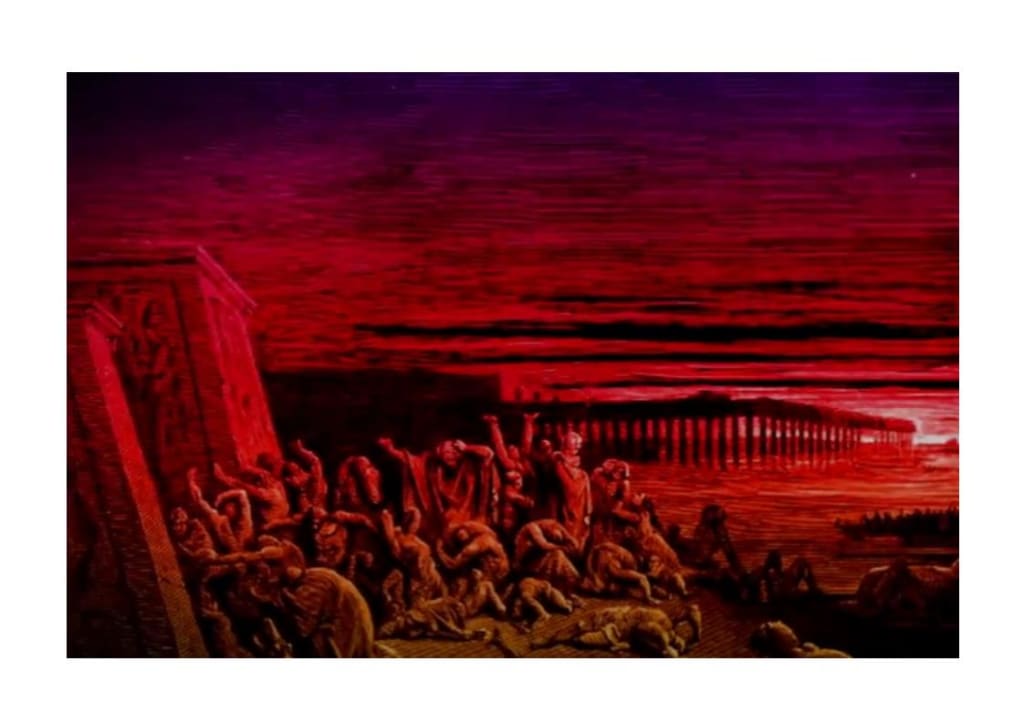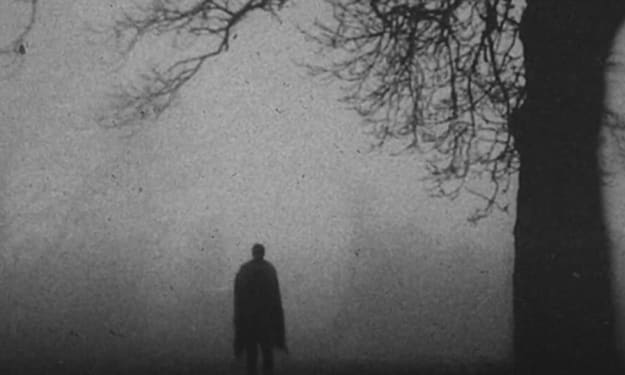Three Times When Humanity Could Disappear

Ancient civilizations and prophets from around the world have consistently predicted the demise of humanity and the Earth. The calendar of the Maya, the ancient civilization of America, ended on December 21, 2012. At that time, the whole world awaited the end of the world, but it did not happen. However, the prophecies of the famous French soothsayer Michel Nostradamus are detailed until the year 3797. Does this mean that life on Earth will end then, and should we believe such predictions at all? Incidentally, the death of our planet will occur when the Sun goes out, plunging the world into darkness, but this will not happen for at least another billion years. Some even believe in the possibility of black holes forming in the Large Hadron Collider, but that is beyond the realm of fantasy. What catastrophes have threatened and could threaten humanity in the future?
Throughout history, humanity has faced terrible epidemics that have claimed millions of lives. Epidemics ravaged not only people of the Middle Ages, who knew little about medicine, but also modern people, whose science seemed to have advanced so far. This is perhaps one of the most frightening threats to humanity, and the most well-known epidemic, of course, was the plague. The first outbreak of the plague lasted more than 150 years, from 541 to 800 AD, in Egypt and Europe, killing around 100 million people. The second outbreak of the bubonic plague rightfully earned the name "Black Death" as it claimed the lives of tens of millions across Europe in just seven years, from 1346 to 1353. According to various estimates, the disease killed 30 to 60 percent of Europe's population. The third plague outbreak echoed the Black Death for almost a century, from 1855 to 1960, killing six million Indians and twelve million Chinese. But humanity battled not only the plague.
The next epidemic is considered one of the greatest disasters in human history: the Spanish flu or the Spanish Influenza. Currently, it is the largest flu pandemic in history, not only by the number of infected but also by the number of deaths. The epidemic lasted from January 1918 to 1920. Worldwide, at least 550 million people, or about 30 percent of the planet's population, contracted the Spanish flu, and the death toll reached 100 million. Thus, the fatality rate upon contracting the Spanish flu was up to 20 percent. The flu epidemic began during the final months of World War I and quickly surpassed the number of deaths from the largest armed conflict in human history at that time. The most likely cause of the high mortality rate was a unique feature of the virus strain, which caused a hyper-immune response, leading to the rapid destruction of inflamed lung tissue and filling them with fluid. The Spanish flu claimed the lives of even young patients with strong, developed immune systems.
This flu somewhat resembles what is happening in the world today: COVID-19, a severe acute respiratory infection. The most common complication of the disease is viral pneumonia, which can lead to acute respiratory failure. In most cases, no specific treatment is required for coronavirus, but since 2019, more than four million people worldwide have died, including 170,000 officially in Russia at the time of this video. However, with 209 million cases, the virus's mortality rate is about two percent. Besides recommended hygiene and protective measures, scientists have developed a new defense against the coronavirus: a vaccine, which has become the main modern method of fighting the disease. Vaccinated people are much less likely to get infected, experience milder symptoms, and are far less likely to die from coronavirus complications. I am vaccinated, and I urge all of you to get vaccinated. It is interesting to wonder if people with today's knowledge and equipment could have prevented the deadly spread of the Spanish flu and whether humanity is prepared for other terrifying epidemics.
I think many of you have watched the Russian series "Epidemic" or the American series "The Walking Dead." Another series, "The Survivors," has just been released. It is about a deadly virus that quickly wiped out many people in just a few days, leaving a few survivors struggling in a post-apocalyptic world. The series vividly portrays what could happen to humanity if our familiar world were to disappear due to a deadly pandemic: anarchy, banditry, a brutal fight for food and fuel. The scariest part is that, according to the plot, people cannot sleep for more than two hours; otherwise, they will die. Of course, I recommend this series to all post-apocalyptic lovers. The series is now available, and you can find promo codes and all the links in the description of this video.
However, knowledge does not always benefit humanity. The next catastrophe that might await us is a nuclear war.
It almost happened on October 27, 1962, when the USSR and the USA were on the brink of nuclear war. That dreadful day was called Black Saturday. The fate of humanity was decided in the depths of the Caribbean waters by three Russian submarine commanders. It all began when the US government deployed nuclear missiles in Turkey, capable of reaching Moscow. In response, Nikita Khrushchev moved Soviet nuclear weapons to Cuba, from where warheads could reach Washington. After the CIA discovered Soviet weapons on the island, the Pentagon recommended that US President John F. Kennedy bomb them, thereby starting the most terrifying and final war in human history. However, Kennedy did not agree, and both sides tried to negotiate. The conflict reached a critical point when American ships discovered Soviet submarines in the Caribbean Sea near Cuba. To force them to surface, American ships began dropping depth charges, and their planes fired on our submarines from the air. No one knew that the famous B-59 submarine, loaded with nuclear weapons, was underwater. The Soviet crew had only one order: if all three submarine captains agreed, nuclear missiles would be launched. When the bombardment began, one of the Soviet captains decided that the war had already started. Exhausted from the voyage and lack of communication with the outside world, the crew decided to retaliate. Two captains voted to start a nuclear war, but they could not do so without the consent of the third senior officer, Vasily Arkhipov, who categorically opposed it. One against all, with the submarine loaded with bombs, he signaled the American military to cease provocations, and the B-59 began to surface, bringing the world out of the acute stage of a threatening conflict and into the arms race phase.
Neither Soviet nor American leaders knew how close their countries had come to a nuclear war. It's terrifying to imagine what would have happened if a nuclear attack had occurred. Considering that part of the American weapons was located not only in Turkey but also in the UK and southern Italy, even if only some of them had reached the USSR and the US, a global catastrophe would have been inevitable. The USSR, according to some estimates, would have been completely destroyed, turning into a barren radioactive wasteland. The USA, given that Soviet missiles were significantly fewer, would still have suffered enormous losses. Many major cities would have been destroyed. The radioactive cloud would have affected all Northern Hemisphere countries. At high doses of radiation, people would have suffered from radiation sickness, starting with simple nausea and vomiting, leading to organ failure. Besides this, humanity would have had to fight for food and water, with murder and looting rampant. In addition to the terrible radiation, nuclear strikes would have triggered global natural disasters, such as earthquakes and tsunamis, and volcanic eruptions. A nuclear winter would begin. More than a hundred million tons of soot would be thrown into the atmosphere, forming clouds that would block sunlight for at least seven years. The global temperature would drop to Arctic levels. Imagine the consequences of missiles hitting nuclear power plants and a disaster comparable to multiple Chernobyls. An instantaneous explosion of all nuclear power plants on Earth as a result of a nuclear attack would render the planet uninhabitable for at least a hundred years due to soil and atmospheric contamination with cesium-137. Despite the terrifying consequences of using nuclear weapons, eight countries still possess them: Russia, China, the UK, France, India, the USA, Pakistan, and Israel.
Obviously, not only can humanity destroy itself, but nature can also threaten us with bacteria, earthquakes, and, of course, meteorites. When a large meteorite first collided with our Earth, about 75 percent of all species, including dinosaurs, went extinct. The resulting crater was 200 kilometers wide and is located at the bottom of the Gulf of Mexico. Scientists believe that an asteroid about 12 kilometers in diameter collided with the Earth 66 million years ago, causing something similar to a nuclear explosion, a global cooling. When the asteroid fell near the Yucatan Peninsula, it triggered a 100-meter-high tsunami and fires over hundreds of thousands of square kilometers. Additionally, billions of tons of rock debris were ejected into the atmosphere. The meteorite fell in an area rich in sulfur-containing rocks. When they vaporized due to the impact and were thrown into the upper atmosphere, it led to a rapid cooling of the Earth's surface for the next several million years. But large-scale collisions with asteroids are relatively rare. The last such event that could have caused mass casualties was the Tunguska meteorite impact in 1908 in a remote part of Siberia. It is believed that the meteorite exploded before hitting the ground, about 10 kilometers above it. If the meteorite had arrived a few hours later, it would have exploded over St. Petersburg, equivalent to a nuclear explosion with megaton power. Mention should also be made of the asteroid Apophis, named after the ancient Egyptian god who wanted to swallow the sun and plunge the Earth into darkness. Apophis will first approach Earth in April 2029. However, fortunately, given its trajectory and flight distance
, the likelihood of a collision with Earth is extremely low, about one in several hundred thousand.
About a hundred potentially dangerous asteroids have flown over Earth throughout its history. Scientists constantly monitor them. Now scientists are tracking possible collisions and say they can predict them decades in advance. Once a dangerous asteroid is detected, governments worldwide will have to make emergency decisions. The simplest way to eliminate the threat is to deliver a heavy object by spacecraft into space to use it as a ram and divert the asteroid from Earth's course. But developing such a solution will take many years, so preparation must begin immediately at the first sign of danger. A collision with a body more than 30 kilometers in size could lead to the destruction of civilization. Following the collision, unprecedentedly powerful earthquakes would occur. Winds so destructive they would uproot trees and overturn the remains of buildings destroyed by the earthquakes would rise. Then, a tsunami would hit, covering coastal cities with waves up to a hundred meters high. At the impact site, tens of thousands of cubic kilometers of rock would vaporize, turning into dust and rising high into the atmosphere, covering the entire Earth. Plants would not receive enough sunlight for photosynthesis and would begin to die. This dust would take years to settle. Only collective efforts, peace agreements, responsibility, and a focus on creation will save humanity from epidemics, wars, and many other threats that lie ahead of us.
About the Creator
Enjoyed the story? Support the Creator.
Subscribe for free to receive all their stories in your feed. You could also pledge your support or give them a one-off tip, letting them know you appreciate their work.





Comments
There are no comments for this story
Be the first to respond and start the conversation.